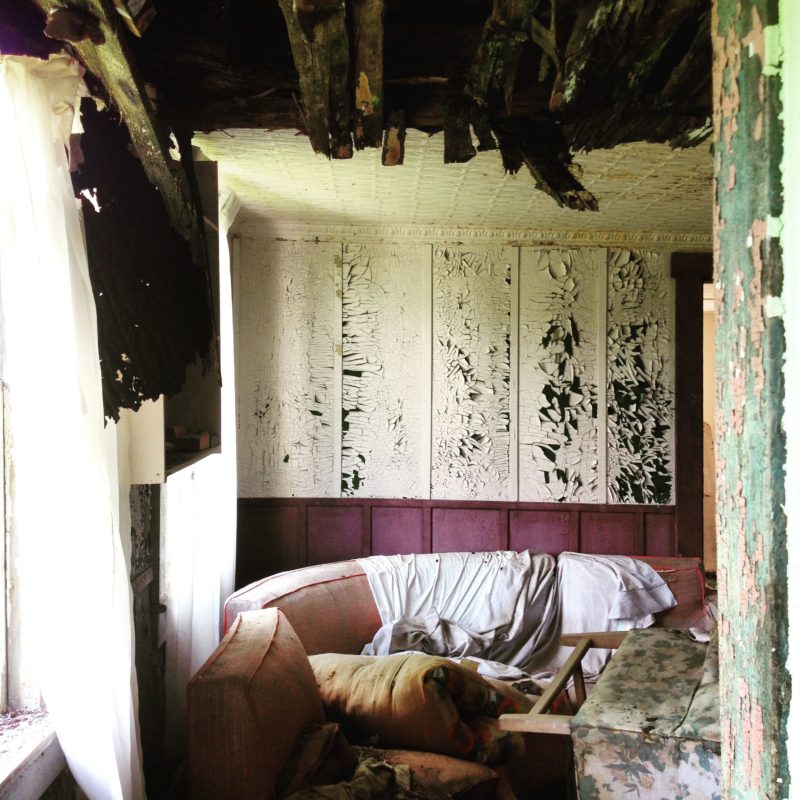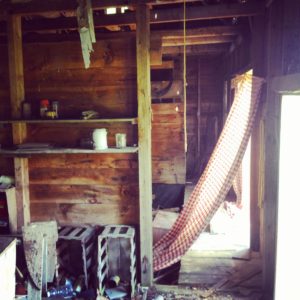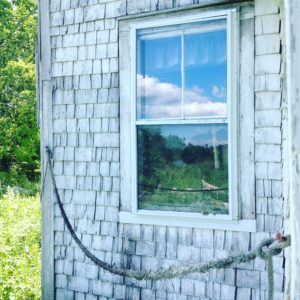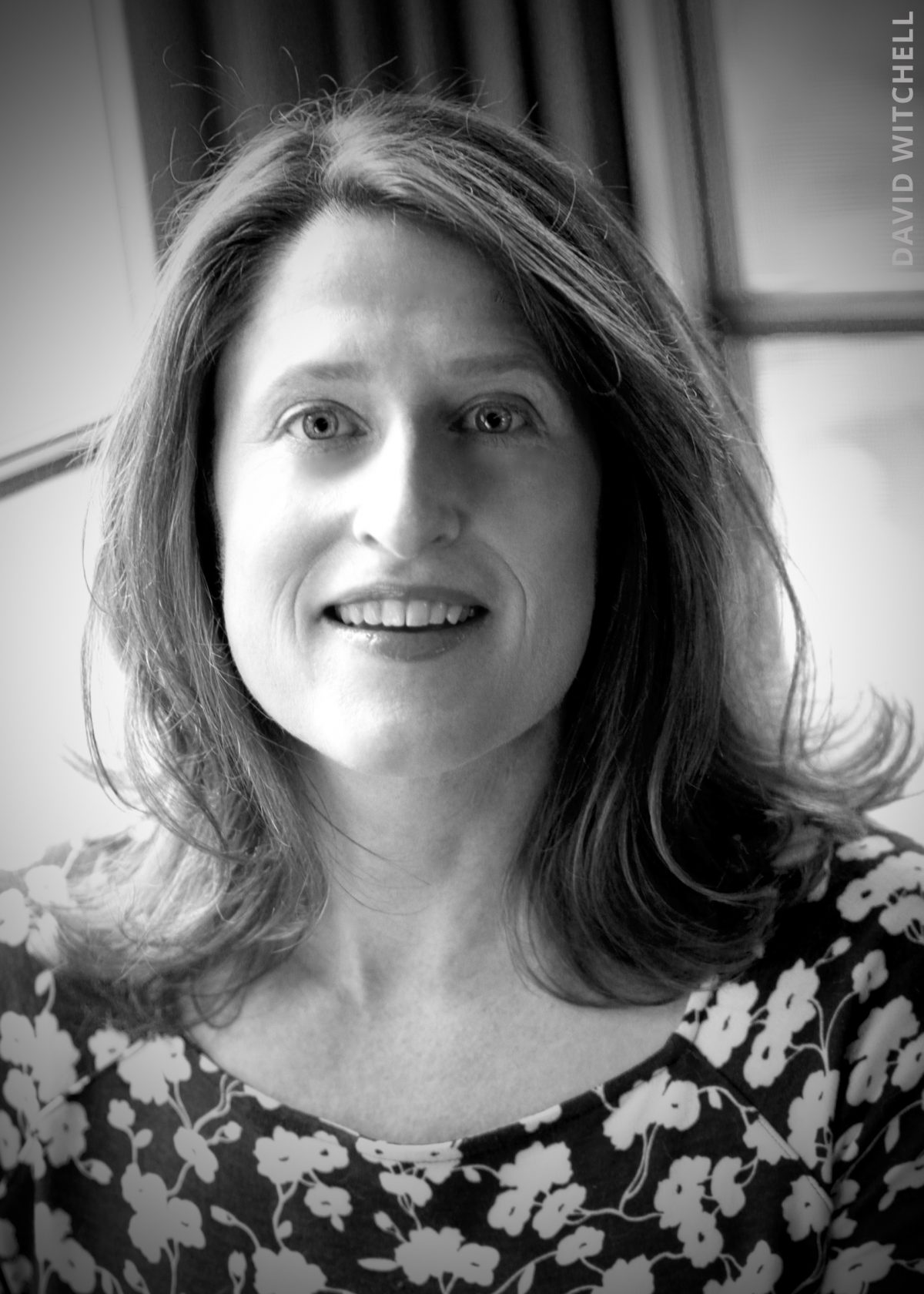
Abandoned houses, like this one in Maine, were the arson targets in Accomack County, Va.
In the winter of 2012, a pair of lovers set dozens of fires over a span of 20 weeks in remote Accomack County, Virginia—once the richest rural county in America, and now one of the poorest. As one or two or four of the county’s seemingly endless supply of abandoned houses went up in flames every week, members of the volunteer fire department became exhausted, and members of the community became suspicious of their neighbors. In fact, when the couple, Charlie Smith and Tonya Bundick, were pulled over at a traffic stop and questioned as to why they were on the road so late at night, they had a perfect alibi: They told the officer that they were trying to catch the arsonist.
“My goal is to tell the story how I would tell it to a friend over coffee. And if I wouldn’t tell it to a friend over coffee, then that’s sometimes a sign to me that I shouldn’t be writing the story to begin with.”
Monica Hesse’s new book, “American Fire: Love, Arson, and Life in a Vanishing Land,” isn’t so much a “who” done it, but a “why” done it, and even then, Hess provides some answers at the outset — “hope, poverty, pride, Walmart, erectile dysfunction, Steak-umms, intrigue, and America” — and still this book is full of unrelenting suspense.
“American Fire” is the expansion of a 6,000-word piece that first appeared in The Washington Post, where Hesse is a style section reporter, regularly hosting Q&As about web culture, composing lively takes on social and cultural events, and periodically delivering deeply reported longform features, such as the “The Crossing” — a profile of a Texas medical examiner. Additionally, Hesse is the author of three young-adult novels, including, most recently, the award-winning “Girl in the Blue Coat.” She’s also won a Society for Feature Journalism’s Narrative Storytelling award.
I interviewed Hesse via email about what it’s like to juggle multiple projects (and genres), about the virtue of capturing the way people talk, and about the national significance of a backwater story. This interview has been edited and condensed for clarity.
I’m curious about the “Vanishing Land” part of the subtitle– I’m guessing that it’s shorthand for the fires’ cumulative erasures of the county’s affluent past? Are you invoking the rotting and burning forgotten-ness of Accomack County’s past?
I could answer this question two ways. The first is the poetic way: You’re spot-on — “Vanishing Land” refers to both the literal disappearance of a landscape and the burning down of dozens of buildings and landmarks, and to the metaphorical disappearance of a way of life. Seventy percent of Americans used to live in rural counties. Now only 15 percent do. It’s a different kind of lifestyle than most of us are familiar with, and it’s disappearing fast.
The other way of answering this question is the matter-of-fact way: “vanishing land” was the phrase that my editor, agent, publicist and I could all agree on. It wasn’t my original subtitle, and it wasn’t my editor’s original, either. It was right for this book, and I love it now … but it was developed not via a flash of inspiration, but via a workmanlike collaboration on a long email chain with dozens of subtitles in the running: “What about ‘fading’? What about ‘disappearing’? What about ‘place’ instead of ‘land’? What about ‘earth’?”
That’s how the title of my last book came around, too. I once visited a high school class that had just read “Girl in the Blue Coat,” and the students proudly told me that they had a lot of theories on the symbolism of the title. Really, the biggest thing the title symbolized was that nobody else had liked my original idea, and GITBC was the compromise.
Based on the variety of your writing projects, I’m guessing you have multiple file cabinets and possibly a messy desk? Care to share any tips for how you manage the long- and short-term projects simultaneously?
A messy bed is more like it, since I’ve never been able to write well at desks! As for all the writing you mention: I was a competitive swimmer when I was growing up, and switching between deadline news, longform features, novels and nonfiction books feels like switching between strokes and distances in the pool. You do nothing but train for the 1650 freestyle, and you get bored and exhausted. So you toss in some 100-yard butterfly sprints, a few flip-turn drills, maybe work on your underwater pull. You get lost in a long fiction project and start to doubt your ability to ever get to the end? There’s a tendency to double down, try harder, write more words. But maybe what you need is to bang out a few daily assignments, so you can get a boost of energy, so that you can remember that writing long and carefully isn’t the same as writing well, and so you can remind yourself that you do know how to finish something. Every form of writing exercises different parts of your brain, but every form will ultimately make you stronger overall.

Abandoned houses, like this one in Maine, were the target of the arsonists in Virginia.
In the preface of “American Fire” you mention stumbling toward this story while in a crummy moment in your journalism career. Can you say a little more about how the situation became a springboard, launching you out of D.C.’s frying pan and into the fire(s) of a remote, rural world?
At the time I started the article that became “American Fire,” I was feeling pretty bored in my day job. The Style section (which is the Washington Post’s features section and which has nothing to do with fashion) was short-staffed, and several of us were just working our butts off to fill the section every day. I was doing a lot of one-day or two-day assignments, and they’d become rote. I knew how to do them well enough, but in doing them, I didn’t feel like I was getting any better.
And a lot of my work at the time was thematic: based in ideas, rather than in stories. Like, the guy who invented the Dorito died, so I wrote a cultural history of snacking. I found myself really wanting to write something with a beginning, a middle and an end. A narrative that would let me get out of the way in order for a good story to tell itself. The Accomack arsons were all of that.
Your book debuted at the moment when one half of America became intensely interested in understanding the other half of America — that is, the America that felt left out and unheard by politicians. I’m wondering if readers have been telling you that “American Fire” is their porthole into communities that elected Trump?
They have. It’s funny, because I turned in my manuscript well before the election, and I’m so glad I did. If I’d written it post-November 2016, I might have felt pressured to pigeonhole Accomack into some meta-narrative of Trump’s America (Accomack went about 55% for Trump and 43% for Clinton, so it was solidly red, though not a total close-out). Instead, I got to let the county and its inhabitants stand as a unique, real, complicated place, rather than a metaphor — even though it turns out they were metaphorical for a lot of things.
I will say that spending so much time down there gave me a different perspective on the election early on. At the time I was living in Accomack, the Republican primaries were just getting into full swing, and there were still more than a dozen candidates in the race. In the news, Trump was reported as a fringe candidate. But all the people I was spending time with, the volunteer firefighters and their families — they loved Trump. Many of them were folks who hadn’t voted much before, because they mistrusted the political system, but they were excitedly planning to vote for Trump. They were a complete bellwether for the country.
At times the narration in “American Fire” becomes almost intimate–most memorably, “Arson is a weird crime” and “It’s amazing how boring trials can be”…. Is writing for a book’s readership different than writing for the Post’s audience?
I was at a horrible dinner party not long ago where the guy I was seated next to was an aspiring journalist who had read some of my work, and at one point he turned to me and said, “I don’t understand why you’re supposed to be a good writer. It seems like you just write how people talk.” It was like, the most wonderful backhanded insult ever. Because he obviously meant to be derogatory, but I just thought, “My god, really? Thank you!” Some writers can pull of beautiful, grammatically complex sentences that are a lovely stretch for a reader’s brain. That’s never been my strength. Usually, I’m trying to honor a story and its characters by writing as simply and intimately as possible. Whether I’m writing for the Post’s readership, or a wider general audience, my goal is to tell the story how I would tell it to a friend over coffee. And if I wouldn’t tell it to a friend over coffee, then that’s sometimes a sign to me that I shouldn’t be writing the story to begin with.
Also: my editor for a time was the incomparable Henry Allen. He had a rule: big story, small words. Small story, big words. And I take that to heart. The language used to talk about the cultural history of Doritos should be much grander than the language used to talk about 86 arsons in rural Virginia.
“Whatever I’m writing, I’m trying to think about the meaning behind it. The Why of it all. The human experience running through it that can speak to everyone, even if they don’t care about fires, or Virginia, and even if they think they don’t like true crime.”
Three-quarters of the book’s 28 chapters are titled with phrases spoken by the characters, such as “Like a Ghost,” “Like Hell Was Coming Up Through the Ground” and (possibly my favorite), “I Can’t Tell You Something I Don’t Know.” Each of these phrases germinates and blooms in the context of the chapter’s events. As visual as this book is, it’s also fabulously auditory–each voice is unique and distinct and colorful without succumbing to caricature. Given that listening is as crucial to reporting as the writing itself, do you have any advice for capturing and incorporating this electric dialogue?
Use a tape recorder. Use two tape recorders, to calm the inevitable, “technology is against me, what if this interview isn’t recording?” panic. Use it even when you’re not conducting a formal interview, just so you can have the spontaneous background dialogue. When I’m about to interview a regular person (not a celebrity or politician), I always do my first conversation off the record, without a recorder, and without a notebook. We’ll chat for several minutes, maybe an hour, so they can get a sense of what it’s like to talk to me and, what kind of questions I might want to ask, and whether they trust me enough to keep going. Then, partway into that conversation, when they say something I know is important, I’ll say something like, “The way you just described that is really interesting to me. Do you mind if I pull out my recorder?” So far, I’ve only had one or two people say no. But if you ask in the beginning, “Can I record this?” a lot of people will decline. I mean, I would probably decline myself.
The best line in the book by far isn’t one that I wrote. It’s something that a guy named Pete Blackwell — a local carpenter and part-time DJ — said to me when I was asking him to describe what the fire at Whispering Pines had looked like. He told me, “It looked like hell had come up through the ground.” That became a chapter title, and once I figured out that should be a chapter title, I also figured out that so much of the dialogue I’d recorded was way better than anything I would have come up with on my own. I mean, there was an arson investigator who told me about trying to determine the identity of a fuzzy figure they’d captured on a security camera. He said, “I’d seen enough ass to know — that was a woman.” Can you imagine if I’d paraphrased it to, “He sensed the figure was female?” Awful.
How did you steer a course so faithfully through the storm of your research (U.S. census data, trial transcripts, 911 call recordings)? It seemed there was no gratuitous information, nothing included because dammit, it was arduous to uncover this data, so, relevant or not, it’s going in the book. Is there any information that wasn’t included in the book that still tugs at you?
The stuff that I wish could have gone in the book is all stuff that I knew responsibly could never go in the book. In the course of reporting, I heard a lot of stories about Tonya Bundick, the female arsonist. Some of them were bizarro half-rumors, some of them seemed like credible anecdotes, some of them seemed both bizarro and credible. I knew I couldn’t include them in the book, because I couldn’t verify them to my liking (which is also why I’m not repeating them now). At the same time, it was painful to leave them out, because they enriched my understanding of Tonya and the county a lot, and I knew they would have done the same for the reader.

Hal Hidgeon, at 86, is Runner’s World most longstanding contributing writer; however, in the 1970s he authored a book called “Leopold and Loeb and the Crime of the Century.” In the acknowledgments, you mentioned you used this book for factual content as well as structure ideas — can you say more about what you borrowed or learned from that book’s structure?
I first picked up a copy of “Leopold and Loeb” when I was in college and housesitting for my boss. I read it cover to cover over the weekend and then … I stole it. It’s the copy I still have now. (Steve, if you are reading this, I am so sorry. The book was out of print, and this was before Amazon had every book known to man). It was the first literary true crime I had ever read — I think “In Cold Blood” was assigned in an English class the following semester — and it was magnificent on so many levels. The details were meticulous. The reporting was both copious and unobtrusive; Higdon never made it look like work. And moreover, it was the story of a crime, but it was also the story of America at the time.
The Style section where I work has had a lot of amazing writers pass through it — Gene Weingarten, David Remnick, David Von Drehle — so I don’t know who originated the saying I’m about to repeat, but it’s this: Every story should be about two things. One, what the story is about. And two, the meaning of life. Whatever I’m writing, I’m trying to think about the meaning behind it. The Why of it all. The human experience running through it that can speak to everyone, even if they don’t care about fires, or Virginia, and even if they think they don’t like true crime.
Alex Tizon’s advice in “Telling True Stories” (Ed: a Nieman Foundation publication!) asserts: “Your subject carries a burden as heavy as yours. Your subject wants something. Your subject is living an epic story”–and the protagonists in “American Fire” absolutely bear this out. Given that your subjects were already in custody by the time you approached this story, how difficult was it to plumb the lives of Tonya Burdick and Charlie Smith and their particular romantic relationship?
By the times I started writing, Charlie and Tonya were in two very different emotional places. Tonya didn’t want to talk at all. Charlie wanted nothing more than to talk, to confess, to come clean. One of the first times he and I talked on the phone, he told me: “Look, I don’t care what you write. But every person I’ve ever met thinks I’m a bad person right now, and maybe I can tell you what was going through my head when I did these things.” There wasn’t a single question I ever asked him, no matter how gritty or intimate, that he refused to answer. That made writing about their relationship easy.
What made writing about their relationship hard was the flip side of that coin. Charlie was telling me everything, but it was everything as he remembered it. What I had to remember is that Tonya had a very different perspective about what had happened. And the fact that she wouldn’t talk to me did not absolve me of the responsibility of trying to tell her story with the same thoroughness. So I had to track down Tonya’s old boyfriends, second cousins, next-door neighbors and former colleagues. I talked to the girl who used to sit next to her on the bus in high school, and the waitress who made her favorite drink at the local bar. Understanding Tonya’s side of the relationship was like someone telling you, “A couple miles back while I was going 60 miles an hour, I opened my car door and dumped out a jigsaw puzzle. Could you go find it and put it back together?” Every piece I found was a cause for celebration, but I never knew how close I was to finishing the thing, and I didn’t have a picture on a box to work from.
“American Fire” has so much exemplary reporting it, but underlying it all, this reader sensed your empathy for the community, for the firefighters, and for the perpetrators. Can you share how you balance/negotiate bringing both objectivity and compassion to your work as a journalist?
When I was starting the reporting for this, most locals were understandably wary about what I was doing. They were sick of talking to reporters. I was an outsider. Some of them heard a rumor that I had been hired by Tonya in order to exonerate her. (I never learned how that one started). So when I was having early conversations with folks, trying to explain what I was doing, I found myself saying: “I just want to know what it felt like to be you. During these five months when your county was burning down, what did it feel like to be you?” So I might hear from some folks, “Oh, Fire Chief So-and-So is a blowhard. Thinks he’s better than us and is always bossing us around.” But when I would talk to Fire Chief So-and-So, he would say, “Nothing terrifies me more than losing one of my volunteers in a fire.” It would become clear to me that he was a hardass because it was more important to him that people be safe than that he be liked.
This isn’t to say that other people’s perspectives aren’t important. It was vitally important that the volunteers working for Chief So-and-So thought he was an egomaniac. But it was also important for me to understand how he saw himself, and why. “What does it feel like to be you?” assuming you can get a real, honest answer, is the most valuable question I ever ask in reporting.


